| One of the first things you are likely to be told, as the owner of a laminitic or EMS horse, is "no treats, no carrots, no apples..". A grape or prune is sometimes suggested as suitable for hiding pergolide tablets, but owners may be warned not to use a slice of carrot or apple for the same purpose. So what's the science behind this? We compared the analysis of carrots, apples, plums, grapes and prunes - all fruits/veg that might be given to a horse as a treat or to hide medication - on the SELF nutrition data website: |
So both on an as fed and a dry matter basis, the carrot wins hands down for having less sugar/starch - just 6.1 g in 100 g. It has the least calories/energy, it has the most fibre of all the above fresh fruits/veg, and it has a huge amount of vitamin A - a 500 kg horse's minimum requirement for vitamin A is 15,000 IU/day, 100 g of fresh raw carrot provides more than this. Horses grazing will get plenty of vitamin A, but horses on an all hay diet, especially hay that isn't green or is older than 6 months, may be short of vitamin A, so carrots provide an excellent source. Carrots also score well as being anti-inflammatory.
But how does the sugar/starch in carrots compare to other common feeds, such as hay?
A 500 kg horse eating 2% of its bodyweight would be having 10 kg dry weight, or approx. 11.2 kg as fed weight hay/day. Sticking to as fed figures, say the hay is 7.15% combined ESC (simple sugar) and starch (or 8% DM), that would be 800 g of sugar/starch eaten in a day. If eaten over say 16 hours (so 700 g hay as fed/hour), that would be 50 g of sugar/starch in each of those 16 hours.
So if 700 g of 7.15% sugar/starch hay as fed gives 50 g sugar/starch,
100 g hay as fed would give 7.1 g sugar/starch
and 100 g carrot as fed gives 6.1 g sugar/starch
- so a carrot doesn't look quite so evil now!
To be fair, that 100 g of hay has also provided a lot of fibre, some protein, fat, minerals and vitamins, whereas the carrot has mostly provided water, but also that valuable vitamin A.
And compare a carrot to say Spiller's High Fibre Cubes which were approved by the Laminitis Trust (until 2019 when they were removed from the scheme because the Cubes contain live yeast) (NB The Laminitis Trust Feed Approval Mark should not be taken as indicating that a feed is safe for laminitics - their criteria is that the NSC of the feed should not exceed 40%* - the ACVIM Consensus Statement on EMS suggests that NSC should not exceed 10% of the diet for horses with EMS**) - they contain 10% starch and 4.5% sugar***, so 100 g of High Fibre cubes would give 14.5 g sugar/starch - more than twice as much sugar/starch on an as fed basis as the same weight of carrots.
To help human diabetics, glycaemic index (GI) has been calculated for common foods. The glycaemic index ranks foods from 0 to 100 according to how much and how quickly blood sugar levels are raised after healthy humans have eaten a certain amount of the food (to provide a controlled amount of digestible carbohydrates). The University of Sydney gives 80 g raw diced carrots a GI of 35 (2017). The glycaemic load may be more helpful - this takes into account the effect on blood glucose from eating a typical portion. High water content foods like carrots usually have a low GL (less than 10 is considered low - 80 g raw diced carrots have a GL of 2 according to the University of Sydney (2017)). See Debunking the Carrot Myth - Glycemic Index Foundation. NB these figures relate to humans, not horses.
In her book "The Truth About Feeding Your Horse", equine nutritionist Clare Macleod busts the myth that carrots "should not be fed to .. those prone to laminitis" and agrees that although on a dry matter basis carrots are relatively high in sugar, on a fresh weight basis they are low in sugar (she suggests a fresh carrot contains around 7.5% sugar). She recommends feeding carrots for their betacarotene content (vitamin A precursor), particularly for older horses, to help provide antioxidants.
As always, common sense should prevail - if a horse's insulin is too high and/or it currently has active laminitis then hold back on the carrots and keep the diet as strict as possible, just analysed & soaked hay with appropriate levels of protein, minerals & vitamins, plus perhaps linseed to provide Omega 3 if a horse doesn't get grass. But once insulin levels and symptoms are under control, then a carrot or two a day, particularly if sliced and fed throughout the day rather than in one go, is unlikely to do any harm.
For more information about feeding horses with laminitis, EMS and PPID, see The Laminitis Site's Diet page.
* Laminitis Trust Approval Mark for horse feeds
"B. Criteria
4. NSC (%) must not exceed 40% of the dry matter of the feed (where NSC is used as an estimate for the hydrolysable and rapidly fermentable carbohydrate feed fractions)."
** ACVIM Consensus Statement Equine Metabolic Syndrome (2010)
It is therefore recommended that NSC be calculated by adding starch and WSC percentages together, and this value should ideally fall below 10% of dry matter when feeding horses or ponies with EMS.
*** Spillers High Fibre Cubes nutritional analysis
But how does the sugar/starch in carrots compare to other common feeds, such as hay?
A 500 kg horse eating 2% of its bodyweight would be having 10 kg dry weight, or approx. 11.2 kg as fed weight hay/day. Sticking to as fed figures, say the hay is 7.15% combined ESC (simple sugar) and starch (or 8% DM), that would be 800 g of sugar/starch eaten in a day. If eaten over say 16 hours (so 700 g hay as fed/hour), that would be 50 g of sugar/starch in each of those 16 hours.
So if 700 g of 7.15% sugar/starch hay as fed gives 50 g sugar/starch,
100 g hay as fed would give 7.1 g sugar/starch
and 100 g carrot as fed gives 6.1 g sugar/starch
- so a carrot doesn't look quite so evil now!
To be fair, that 100 g of hay has also provided a lot of fibre, some protein, fat, minerals and vitamins, whereas the carrot has mostly provided water, but also that valuable vitamin A.
And compare a carrot to say Spiller's High Fibre Cubes which were approved by the Laminitis Trust (until 2019 when they were removed from the scheme because the Cubes contain live yeast) (NB The Laminitis Trust Feed Approval Mark should not be taken as indicating that a feed is safe for laminitics - their criteria is that the NSC of the feed should not exceed 40%* - the ACVIM Consensus Statement on EMS suggests that NSC should not exceed 10% of the diet for horses with EMS**) - they contain 10% starch and 4.5% sugar***, so 100 g of High Fibre cubes would give 14.5 g sugar/starch - more than twice as much sugar/starch on an as fed basis as the same weight of carrots.
To help human diabetics, glycaemic index (GI) has been calculated for common foods. The glycaemic index ranks foods from 0 to 100 according to how much and how quickly blood sugar levels are raised after healthy humans have eaten a certain amount of the food (to provide a controlled amount of digestible carbohydrates). The University of Sydney gives 80 g raw diced carrots a GI of 35 (2017). The glycaemic load may be more helpful - this takes into account the effect on blood glucose from eating a typical portion. High water content foods like carrots usually have a low GL (less than 10 is considered low - 80 g raw diced carrots have a GL of 2 according to the University of Sydney (2017)). See Debunking the Carrot Myth - Glycemic Index Foundation. NB these figures relate to humans, not horses.
In her book "The Truth About Feeding Your Horse", equine nutritionist Clare Macleod busts the myth that carrots "should not be fed to .. those prone to laminitis" and agrees that although on a dry matter basis carrots are relatively high in sugar, on a fresh weight basis they are low in sugar (she suggests a fresh carrot contains around 7.5% sugar). She recommends feeding carrots for their betacarotene content (vitamin A precursor), particularly for older horses, to help provide antioxidants.
As always, common sense should prevail - if a horse's insulin is too high and/or it currently has active laminitis then hold back on the carrots and keep the diet as strict as possible, just analysed & soaked hay with appropriate levels of protein, minerals & vitamins, plus perhaps linseed to provide Omega 3 if a horse doesn't get grass. But once insulin levels and symptoms are under control, then a carrot or two a day, particularly if sliced and fed throughout the day rather than in one go, is unlikely to do any harm.
For more information about feeding horses with laminitis, EMS and PPID, see The Laminitis Site's Diet page.
* Laminitis Trust Approval Mark for horse feeds
"B. Criteria
4. NSC (%) must not exceed 40% of the dry matter of the feed (where NSC is used as an estimate for the hydrolysable and rapidly fermentable carbohydrate feed fractions)."
** ACVIM Consensus Statement Equine Metabolic Syndrome (2010)
It is therefore recommended that NSC be calculated by adding starch and WSC percentages together, and this value should ideally fall below 10% of dry matter when feeding horses or ponies with EMS.
*** Spillers High Fibre Cubes nutritional analysis
Updated 2017 to include swede, turnip and parsnip (click on the image to enlarge it)
(First posted March 2013 above, updated February 2019 below)
A new ECEIM consensus statement on equine metabolic syndrome was published online in February 2019, which stated that "grains or cereal‐based complementary feeds, fruit, or vegetables such as carrots, apples, or treats should be excluded from the diet because of their high NSC content."
When sharing the statement, The Laminitis Site suggested that "whilst there may be little justification to feed more than small amounts of something that is mostly water and sugar (and a source of vitamin A), on an as fed basis, carrots contain around 6% combined sugar and starch - less than some hays and several feeds that carry "safe for laminitics" marks."
The ECEIM responded to this comment, saying: "Regarding carrots, these may contain more than 60% starch and sugar on a dry matter basis and are clearly high-NSC feed items (Brøkner et al 2012), unlike most hays. Whilst accepting that the absolute amount of sugar in one fresh carrot is quite small, it would still contain more sugar than in other items such as sugar lumps for example, yet we would quite rightly avoid those in an insulin-dysregulated horse. We regard the feeding of high-sugar feed items such as carrots (and sugar lumps) as unnecessary and poor discipline for those governing the diet of laminitis-prone horses. Carrots are not a natural feed item for horses and they add no nutritional value to a well-balanced diet as described in the consensus statement." The ECEIM comment can be read here.
A new ECEIM consensus statement on equine metabolic syndrome was published online in February 2019, which stated that "grains or cereal‐based complementary feeds, fruit, or vegetables such as carrots, apples, or treats should be excluded from the diet because of their high NSC content."
When sharing the statement, The Laminitis Site suggested that "whilst there may be little justification to feed more than small amounts of something that is mostly water and sugar (and a source of vitamin A), on an as fed basis, carrots contain around 6% combined sugar and starch - less than some hays and several feeds that carry "safe for laminitics" marks."
The ECEIM responded to this comment, saying: "Regarding carrots, these may contain more than 60% starch and sugar on a dry matter basis and are clearly high-NSC feed items (Brøkner et al 2012), unlike most hays. Whilst accepting that the absolute amount of sugar in one fresh carrot is quite small, it would still contain more sugar than in other items such as sugar lumps for example, yet we would quite rightly avoid those in an insulin-dysregulated horse. We regard the feeding of high-sugar feed items such as carrots (and sugar lumps) as unnecessary and poor discipline for those governing the diet of laminitis-prone horses. Carrots are not a natural feed item for horses and they add no nutritional value to a well-balanced diet as described in the consensus statement." The ECEIM comment can be read here.
We thought it would be interesting to compare the total sugar and starch on an as fed basis (as that is what the horse eats) of sugar cubes, raw carrot and The Laminitis Trust approved (until 2019 - see above) Spillers High Fibre Cubes.
Sugar: 2 cubes of sugar weighed 5.15 g on a gram scale. Sugar cubes are 100% sucrose on both an as fed and dry matter basis (sucrose is half glucose, half fructose).
Carrot: 83.5 g of raw carrot contains approximately 5.15 g of sugar and starch combined.
Using the USDA Nutrient Database figures for raw carrot: sugar content 4.74% (0.55% fructose, 0.59% glucose, 3.59% sucrose) and starch content of 1.43% = 6.17% combined, so 6.17 g of sugar and starch in 100 g. 83.5 g of carrot x 6.17% sugar/starch = 5.15 g of sugar/starch. Our 15+ cm reasonably thick carrot weighed 83 g.
Spillers High Fibre Cubes: 35.5 g of High Fibre Cubes contains approximately 5.15 g of sugar and starch combined. The feed label and website give the sugar content as 4.5% and the starch content as 10% = 14.5% combined, so 14.5 g of sugar and starch in 100 g. 35.5 g of Cubes x 14.5% sugar/starch = 5.15 g of sugar/starch.
So looking at the ECEIM's statement:
1. Carrots are not fed on a dry matter basis, they are fed on an as fed basis, and their combined sugar and starch levels are low - 5.15 g in a pretty average 83 g carrot, 6.17 g in a 100 g carrot. It doesn't matter for this discussion whether we talk about carrots on an as fed or dry matter basis. As fed, a 100 g of carrot contains around 6.17 g of sugar and starch. On a dry matter basis, the same 100 g carrot contains 88.3 g of water, so is 11.7 g dry matter, and its sugar and starch % is (6.17 / 11.7 =) 52.7%. So whilst on a dry matter basis you are feeding a carrot with a scary sounding sugar/starch amount of 52.7%, you are only feeding 11.7 g of it (because you aren't counting the water), and 11.7 g x 52.7% = 6.17 g of sugar and starch (surprise, surprise!).
Equine nutritionist Clare MacLeod commented (on The Laminitis Site Facebook page 14 February 2019) "Carrots are NOT high in NSC on an as fed basis. Period. It's a classic but fundamental error to assign the characteristics of a feed material DM when it's fed in its fresh state."
Sugar: 2 cubes of sugar weighed 5.15 g on a gram scale. Sugar cubes are 100% sucrose on both an as fed and dry matter basis (sucrose is half glucose, half fructose).
Carrot: 83.5 g of raw carrot contains approximately 5.15 g of sugar and starch combined.
Using the USDA Nutrient Database figures for raw carrot: sugar content 4.74% (0.55% fructose, 0.59% glucose, 3.59% sucrose) and starch content of 1.43% = 6.17% combined, so 6.17 g of sugar and starch in 100 g. 83.5 g of carrot x 6.17% sugar/starch = 5.15 g of sugar/starch. Our 15+ cm reasonably thick carrot weighed 83 g.
Spillers High Fibre Cubes: 35.5 g of High Fibre Cubes contains approximately 5.15 g of sugar and starch combined. The feed label and website give the sugar content as 4.5% and the starch content as 10% = 14.5% combined, so 14.5 g of sugar and starch in 100 g. 35.5 g of Cubes x 14.5% sugar/starch = 5.15 g of sugar/starch.
So looking at the ECEIM's statement:
1. Carrots are not fed on a dry matter basis, they are fed on an as fed basis, and their combined sugar and starch levels are low - 5.15 g in a pretty average 83 g carrot, 6.17 g in a 100 g carrot. It doesn't matter for this discussion whether we talk about carrots on an as fed or dry matter basis. As fed, a 100 g of carrot contains around 6.17 g of sugar and starch. On a dry matter basis, the same 100 g carrot contains 88.3 g of water, so is 11.7 g dry matter, and its sugar and starch % is (6.17 / 11.7 =) 52.7%. So whilst on a dry matter basis you are feeding a carrot with a scary sounding sugar/starch amount of 52.7%, you are only feeding 11.7 g of it (because you aren't counting the water), and 11.7 g x 52.7% = 6.17 g of sugar and starch (surprise, surprise!).
Equine nutritionist Clare MacLeod commented (on The Laminitis Site Facebook page 14 February 2019) "Carrots are NOT high in NSC on an as fed basis. Period. It's a classic but fundamental error to assign the characteristics of a feed material DM when it's fed in its fresh state."
Brokner et al. 2012 analysed freeze-dried carrots - the DM content of the freeze-dried carrots was 89.1%, sugar 58.1% (glucose 12.4%, fructose 12.5% and sucrose 33.2%), fibre 27.8%, protein 7.4%, starch negligible - all figures given on a dry matter basis. Using the water content for fresh carrot given in the photo above, 11.7 g per 100 g, these freeze-dried carrots rehydrated to fresh weight would have had 6.8 g of sugar (and no starch) per 100 g. Freeze-dried carrots are full of sugar, fresh carrots are not - it's all about the water content, as well as the sugar %.
Equi-Analytical has lower figures for carrots than the USDA figures given above (figures as at February 2019).
Average WSC is 31.05% x DM content of 13.18% = 4.09% as fed, average ESC 20.6% = 2.72% as fed, average starch 2.18% = 0.29% as fed, so total sugar and starch (using WSC) = 4.38% as fed.
2. As the photo below shows, on a weight for weight basis, you can feed more than twice as much fresh carrot as High Fibre Cubes, and more than 16 x as much carrot as 2 sugar lumps, for the same amount of sugar and starch. In our example we're talking about 5.15 g of sugar and starch, out of a possible 999 g for a 500 kg horse eating 2% of his bodyweight and keeping the combined sugar and starch in his diet below 10%.
Equi-Analytical has lower figures for carrots than the USDA figures given above (figures as at February 2019).
Average WSC is 31.05% x DM content of 13.18% = 4.09% as fed, average ESC 20.6% = 2.72% as fed, average starch 2.18% = 0.29% as fed, so total sugar and starch (using WSC) = 4.38% as fed.
2. As the photo below shows, on a weight for weight basis, you can feed more than twice as much fresh carrot as High Fibre Cubes, and more than 16 x as much carrot as 2 sugar lumps, for the same amount of sugar and starch. In our example we're talking about 5.15 g of sugar and starch, out of a possible 999 g for a 500 kg horse eating 2% of his bodyweight and keeping the combined sugar and starch in his diet below 10%.
3. As for the feeding of carrots being "unnecessary and poor discipline", slivers of carrot can make useful training aids, which can be invaluable for encouraging a horse that is perhaps in pain or frightened to work with you, for example to pick up feet for examination or to stand quietly on blocks for x-rays to be taken or to have blood collected. See Hand-Feeding Treats to Horses by Dale Rudin Feb 2019 for benefits of using food rewards for training.
A slice of carrot can make a perfect hiding place for a Prascend tablet. Consider also, a horse newly diagnosed with EMS or laminitis has probably already had restrictions and less pleasant management imposed on him - he has probably been removed from going out in the field with his mates and eating grass, and may be shut in a stable for hours on his own, eating what he considers to be boring soaked hay from a small holed haynet that is frustrating him. He hasn't been naughty, he is ill. If he is used to having the odd slice of carrot for being well behaved, or perhaps last thing at night, why remove yet another pleasure - his quality of life should be maximized, not minimized. Put yourself in your horse's place. Of course you want strict management to reduce his risk of laminitis or to hasten his recovery, but not to the extent of giving him nothing to live for! It's all about looking at the numbers, thinking about what your horse wants and needs, and finding a balance.
4. "Carrots are not a natural feed item for horses" - so only natural feed items should be fed to horses? And what is a "natural feed item" - something a feral horse would find? So no unmolassed sugar beet, no soya mashes, no mineral balancers.... Feral horses may struggle to dig up a carrot growing in the wild, but they'd certainly eat apples - so does that make apples ok, but not carrots?!
5. Some owners add single minerals and vitamins to their horse's diet to make up for short falls in their forage, and carrots provide a very useful source of vitamin A. It is certainly not the case that they add "no nutritional value", although the ECEIM may argue that all horses should be fed a balancer that contains vitamin A. There are also small amounts of protein (7.9% DM) and fibre (24% DM), minerals and oil in a carrot - compared to a sugar lump which has no nutrients other than sugar (energy).
Perhaps the ECEIM authors deal with owners who would feed kilos of carrots if they were told that horses with ID could have carrots, but that certainly isn't our experience. We know of many owners of horses with EMS and laminitis who give their horses a small amount of carrot (generally less than 100 g/day) with no problems.
A slice of carrot can make a perfect hiding place for a Prascend tablet. Consider also, a horse newly diagnosed with EMS or laminitis has probably already had restrictions and less pleasant management imposed on him - he has probably been removed from going out in the field with his mates and eating grass, and may be shut in a stable for hours on his own, eating what he considers to be boring soaked hay from a small holed haynet that is frustrating him. He hasn't been naughty, he is ill. If he is used to having the odd slice of carrot for being well behaved, or perhaps last thing at night, why remove yet another pleasure - his quality of life should be maximized, not minimized. Put yourself in your horse's place. Of course you want strict management to reduce his risk of laminitis or to hasten his recovery, but not to the extent of giving him nothing to live for! It's all about looking at the numbers, thinking about what your horse wants and needs, and finding a balance.
4. "Carrots are not a natural feed item for horses" - so only natural feed items should be fed to horses? And what is a "natural feed item" - something a feral horse would find? So no unmolassed sugar beet, no soya mashes, no mineral balancers.... Feral horses may struggle to dig up a carrot growing in the wild, but they'd certainly eat apples - so does that make apples ok, but not carrots?!
5. Some owners add single minerals and vitamins to their horse's diet to make up for short falls in their forage, and carrots provide a very useful source of vitamin A. It is certainly not the case that they add "no nutritional value", although the ECEIM may argue that all horses should be fed a balancer that contains vitamin A. There are also small amounts of protein (7.9% DM) and fibre (24% DM), minerals and oil in a carrot - compared to a sugar lump which has no nutrients other than sugar (energy).
Perhaps the ECEIM authors deal with owners who would feed kilos of carrots if they were told that horses with ID could have carrots, but that certainly isn't our experience. We know of many owners of horses with EMS and laminitis who give their horses a small amount of carrot (generally less than 100 g/day) with no problems.
Durham AE, Frank N, McGowan CM, Menzies-Gow NJ, Roelfsema E, Vervuert I, Feige K, Fey K
ECEIM consensus statement on equine metabolic syndrome
Journal of Veterinary Internal Medicine published online 06 February 2019 https://doi.org/10.1111/jvim.15423
Brokner C, Bach Knudsen KE, Karaman I, Eybye KL, Tauson AH
Chemical and phsiochemical characterisation of various horse feed ingredients
Animal Feed Science and Technology 177 (2012) 86-97
ECEIM consensus statement on equine metabolic syndrome
Journal of Veterinary Internal Medicine published online 06 February 2019 https://doi.org/10.1111/jvim.15423
Brokner C, Bach Knudsen KE, Karaman I, Eybye KL, Tauson AH
Chemical and phsiochemical characterisation of various horse feed ingredients
Animal Feed Science and Technology 177 (2012) 86-97

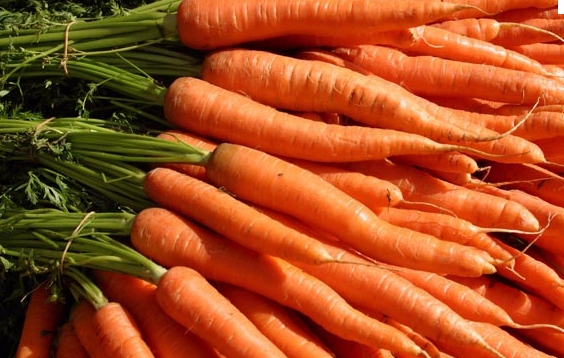
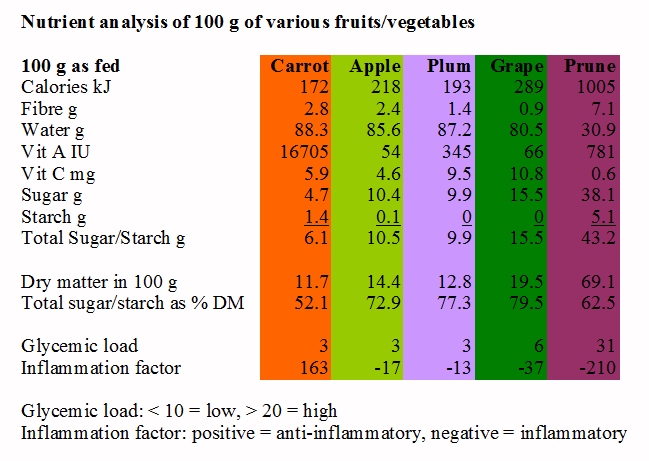
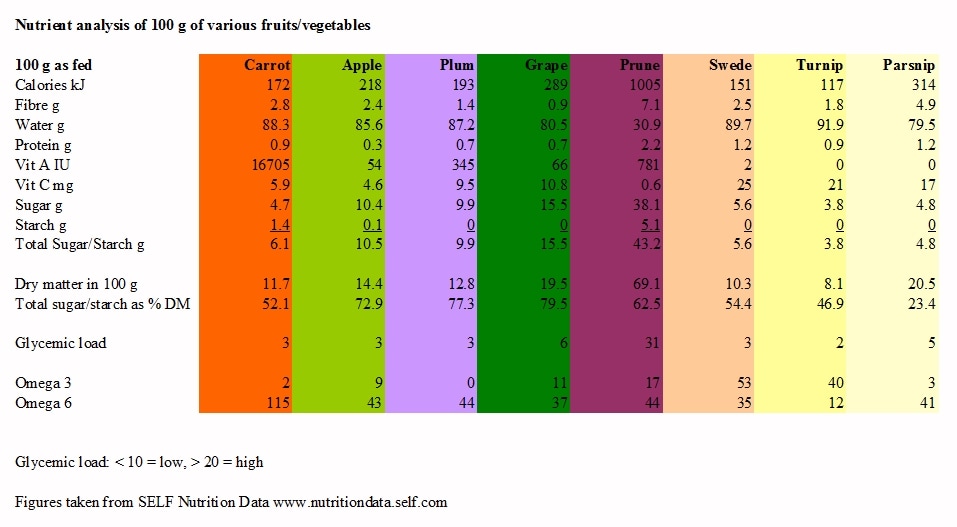
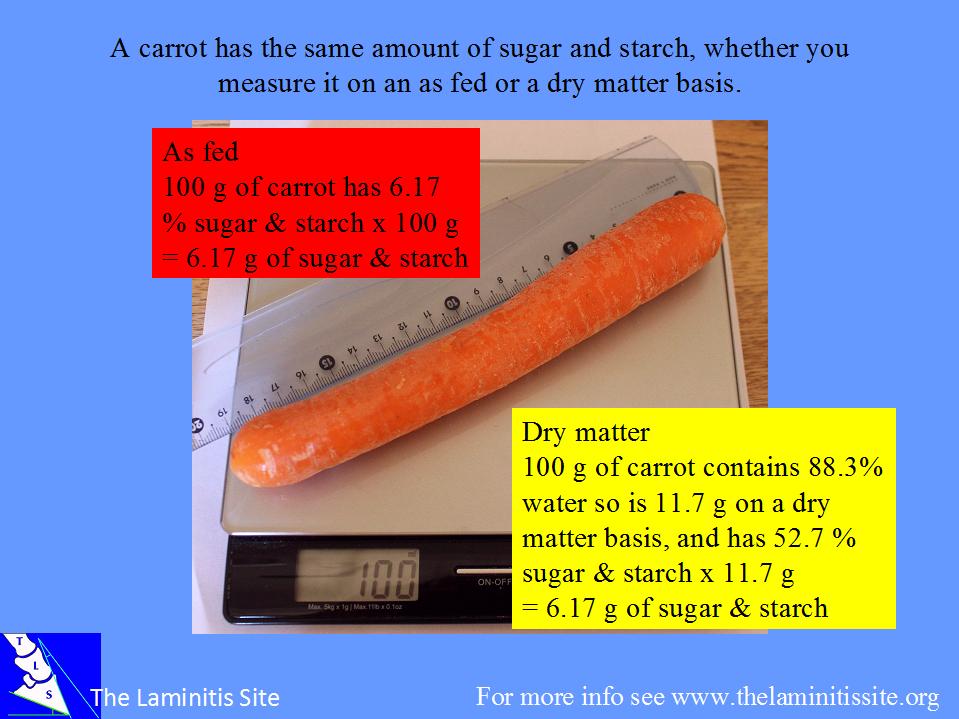
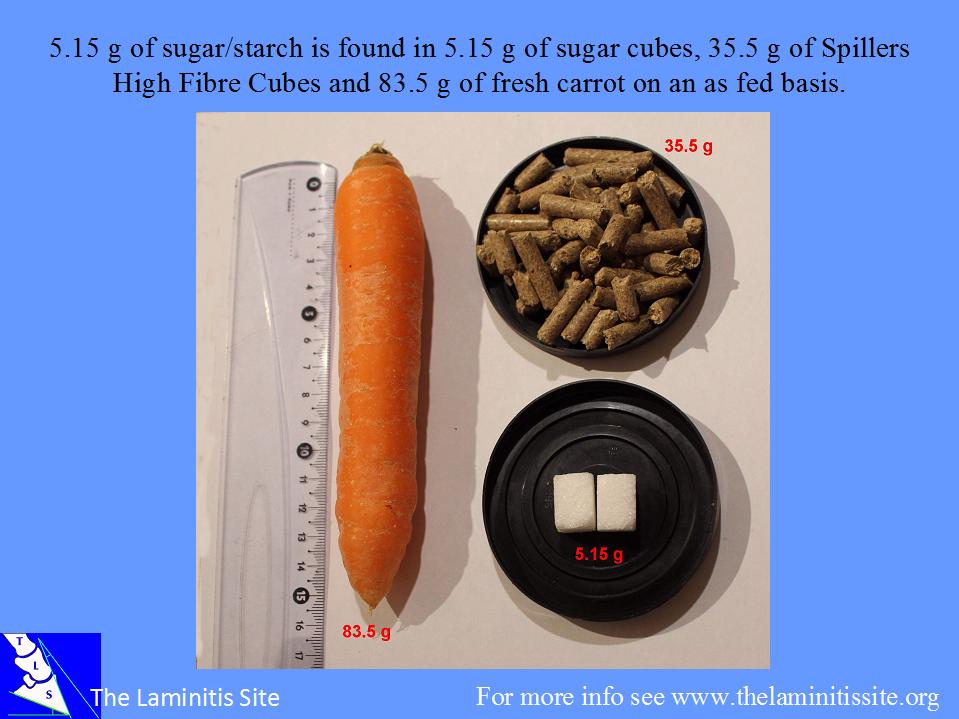
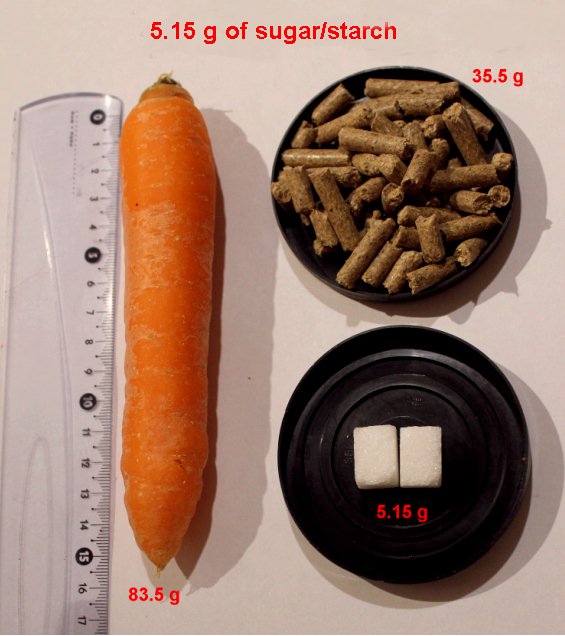
 RSS Feed
RSS Feed